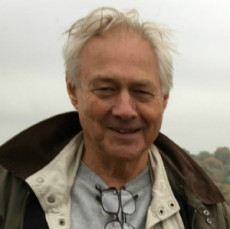Srebrenica, June 11: Before the war, Srebrenica was one of Bosnia’s most picturesque towns, and it still retains much of its Alpine charm. But reminders of war are all around, in the ruined houses, the pock-marked walls, and the graves. Particularly the graves. Between 1993 and 1995, 40,000 people were crammed into the town, and as the space shrank they were forced to bury the dead further and further up the hillside. Way up on the hillsides, some of the graves look like small flocks of sheep.
In the past I have stayed at the Domavia hotel. Muslim soldiers were billeted in the hotel during the war and one had scratched his name and a message inside the door of my room. I remember wondering whether he had ended up in a mass grave.
Srebrenica has this effect upon visitors. You feel as though you’re walking among ghosts. The feeling never completely disappears, but it does begin to fade, particularly when the weather is kind. Today, Srebrenica is relaxed, and some of the small stalls are selling delicious strawberries. Hungarian soldiers from SFOR (NATO’s Stabilisation Force) are lounging near a bar, with not much to do. Old people are passing time in the small park, next to swings.
One can understand why refugees in the drab collective centers of Tuzla want to return here, but Beba’s own aspirations are more complicated. Her husband works for the Srebrenica municipality during the week, and lives in their apartment (which also serves as the Bosfam office in Srebrenica). But Beba herself has built a new life in Tuzla, where she is well-known and respected for Bosfam’s work since 1992.
Srebrenica, however, feels less like home. Beba finds Srebrenica sad and sometimes even frightening. On one visit she ran into a former colleague at her school who had turned into an ardent Serb nationalist and was filmed with the Bosnian Serb general Ratko Mladic on the eve of the massacre. Despite his apparent role in the killing he still walks the streets of Srebrenica. We drive past the house of Beba’s sister, Djefa, who lost a husband and son in the massacre and is so traumatized that she finds even Tuzla too closely associated with her former life. Djefa is planning to move to Sarajevo.

The Guber springs once attracted tourists from all overEurope.
At the same time, Beba is proud to show us where she was raised in Srebrenica. The family lived in the upper part of the town, on Crni Guber street, with plenty of relatives around, and it must have been idyllic. Many houses look intact and a few have flower boxes, but most are empty. The house of Beba’s parents is locked and the garden unkempt, but it still belongs to the family, if and when they are ready to reclaim it. It must have been a warm and spacious home.
Beba also takes us up to the Guber spring, which produces water that is heavy in minerals and supposed to have great healing powers. Guber used to draw tourists from all over Europe. It was also a favorite haunt for young lovers before the war, and the site of a well-known restaurant. All that remains now are ruins and the spring, which leaves a dark copper stain on the ground.
It’s easy to picture Beba here in the 1980s. She led a life of privilege in a wealthy, integrated and peaceful village town. She was director of the primary school, and owned an apartment and a summer house near the river Drina where she and her husband would retreat at the end of a busy week. (The house is now in ruins). As each glimpse of her former life unfolds, like the pages of a photo album, we get a sense of how drastically her fortunes have changed since the war.
Even so, she would be the first to admit that she remains privileged compared to most of Bosfam’s members. Part of this is luck – not least the fact that her husband and son survived. But a lot of it is Beba’s own pluck and determination. She has helped many people to recover from unimaginable trauma. Very few people are given that opportunity, and even fewer are able to rise to the challenge.
Posted By Iain Guest
Posted Jun 11th, 2004

